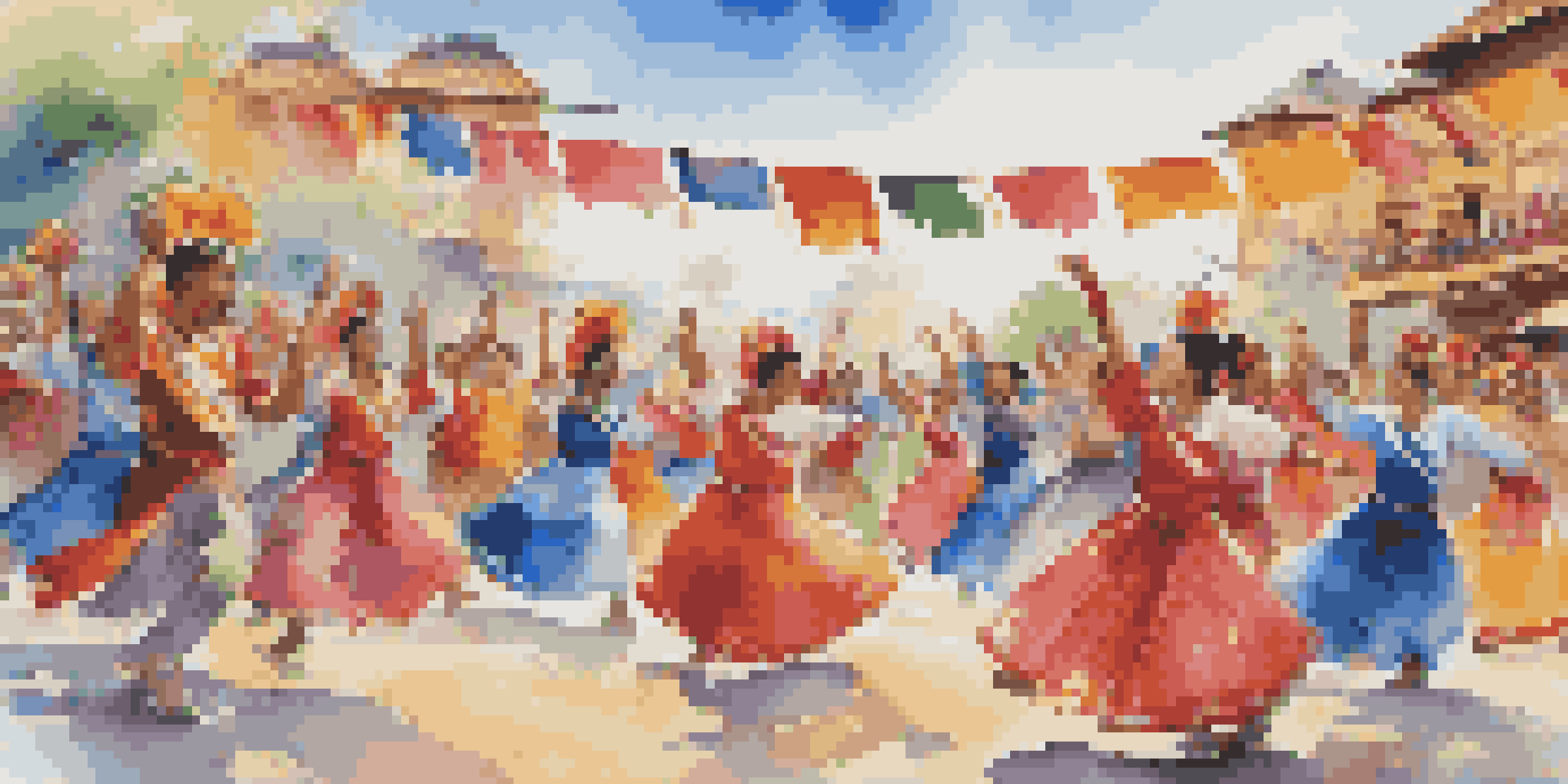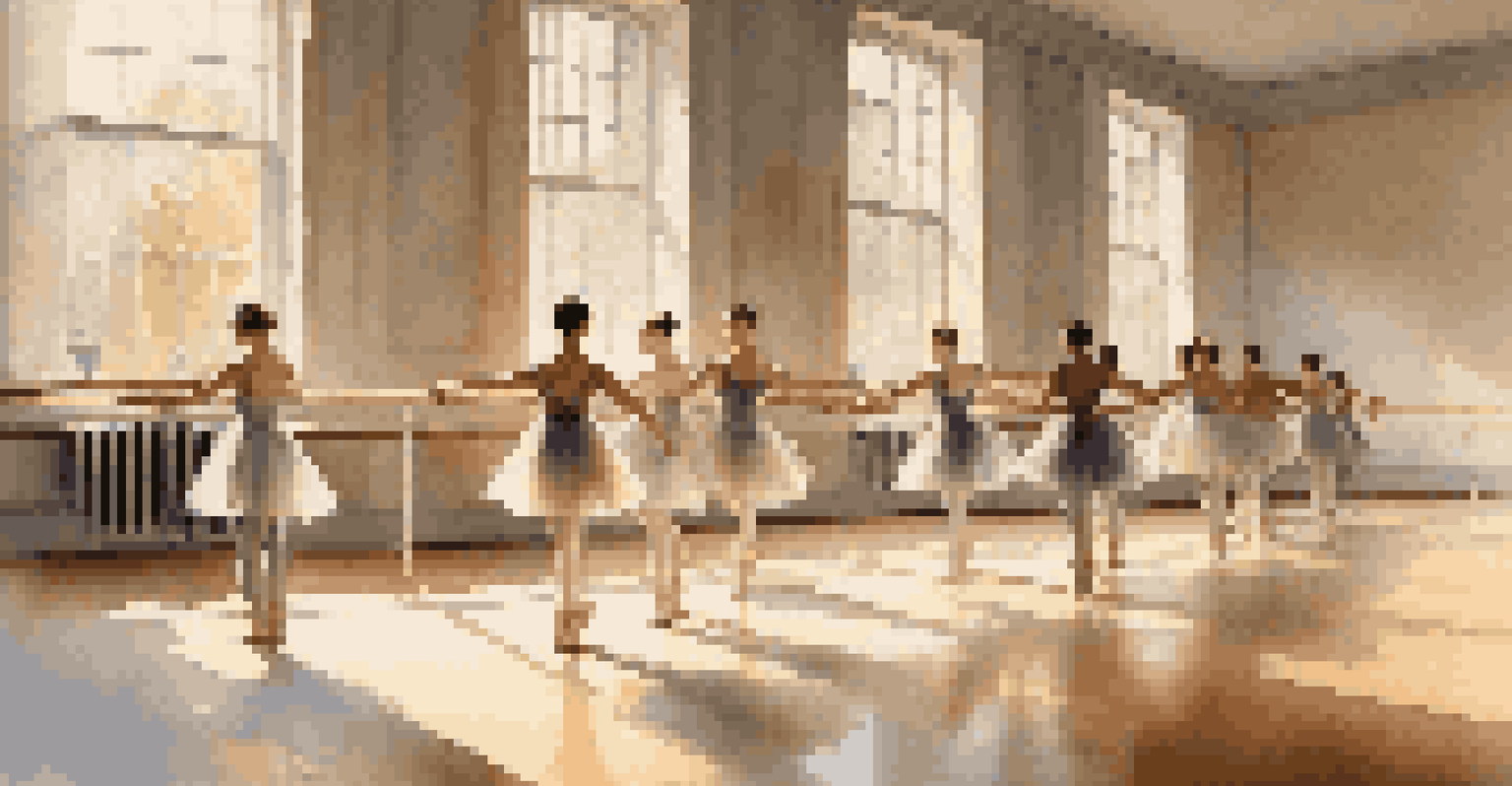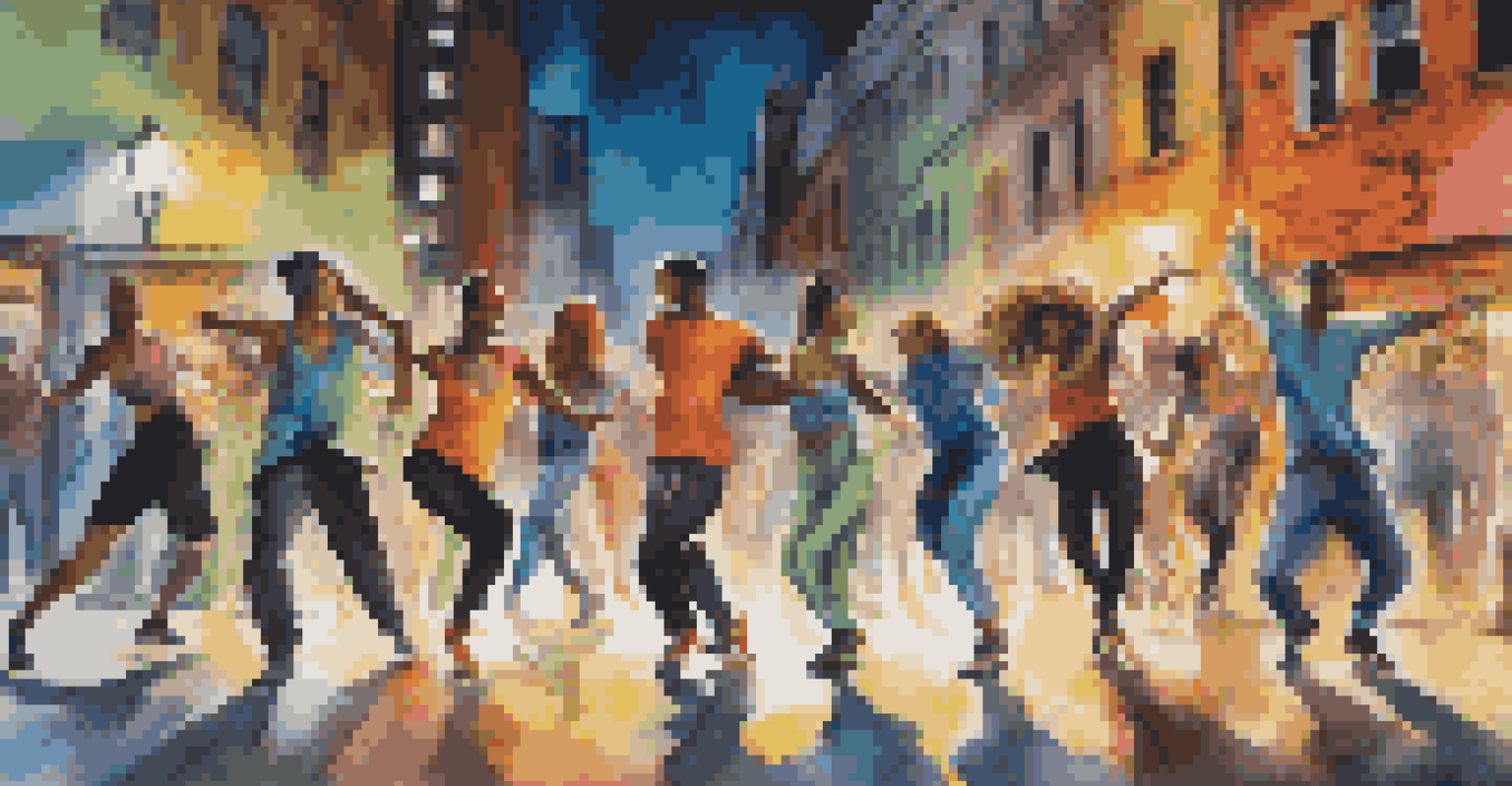Historical Perspectives on Dance and Performance Art Movements

The Origins of Dance: A Cultural Expression
Dance has been a fundamental part of human culture since ancient times, often used in rituals and celebrations. From the tribal dances of indigenous people to the elaborate court dances of European nobility, movement has served as a means of storytelling and community bonding. These early forms of dance showcased not just artistic expression but also social values and beliefs, connecting individuals to their heritage.
Dance is the hidden language of the soul.
As societies evolved, so did dance. The Renaissance, for example, saw a flourish of new styles and techniques influenced by art and music. This period highlighted the importance of individual expression and paved the way for dance to transition from mere ritualistic practice to a respected art form.
Today, we can trace many contemporary dance styles back to these ancient traditions. Understanding the origins of dance helps us appreciate its role in shaping cultural identity and collective memory, demonstrating how deeply intertwined our movements are with our histories.
The Impact of Ballet on Performance Art
Ballet emerged during the Italian Renaissance and quickly spread to France and Russia, establishing itself as a cornerstone of Western dance. Its emphasis on technique, form, and storytelling influenced not only dance but also theater and visual arts. This structured approach allowed for a new level of precision and artistry, creating a lasting legacy in performance art.

The rise of ballet coincided with the growth of opera and theatrical performances, leading to the integration of dance into storytelling. Iconic works like 'Swan Lake' and 'The Nutcracker' showcase how ballet can evoke deep emotions while captivating audiences through visual beauty and technical prowess.
Dance as Cultural Expression
Dance has long served as a vital means of storytelling and community bonding, reflecting social values and cultural heritage.
Moreover, ballet's rigid structure has also inspired various modern dance movements that challenge its conventions. Choreographers like Martha Graham and George Balanchine began to explore emotional expression and fluidity, pushing the boundaries of what dance could convey.
Modern Dance: Breaking Boundaries and Traditions
The early 20th century marked a pivotal shift with the advent of modern dance, challenging the rigidity of ballet. Pioneers like Isadora Duncan and Martha Graham sought to express authentic human emotions rather than adhere to traditional forms. Their work focused on the natural movements of the body, reflecting the complexities of the human experience.
The dance is a poem of which each movement is a word.
Modern dance opened doors for diverse styles and interpretations, allowing performers to explore personal narratives and societal issues. This movement encouraged individuality, leading to the emergence of various sub-genres, such as jazz and hip-hop, each with its own distinct voice and cultural background.
As modern dance flourished, it became a platform for social change, addressing topics like identity, race, and gender. This evolution illustrates how dance can serve as a powerful medium for commentary and self-expression, resonating with audiences on multiple levels.
The Influence of Postmodernism on Dance
Postmodern dance emerged in the 1960s as a rebellion against the established norms of modern dance. Choreographers like Merce Cunningham and Yvonne Rainer introduced concepts such as chance, randomness, and everyday movement, blurring the lines between what constitutes dance. This radical approach invited audiences to reconsider their perceptions of performance art.
The emphasis on improvisation and collaboration marked a significant departure from traditional choreography. Performers were encouraged to explore their own interpretations of movement, leading to more inclusive and experimental practices. This shift not only broadened the definition of dance but also democratized the art form, making it accessible to a wider audience.
Ballet's Lasting Influence
Ballet's emphasis on technique and storytelling has shaped not only dance but also theater and visual arts, creating a legacy that inspires modern movements.
Postmodernism's impact continues to resonate today, as contemporary choreographers draw inspiration from its principles. The exploration of identity, technology, and societal issues remains central to performance art, reflecting an ever-evolving landscape shaped by diverse voices.
The Role of Dance in Social Movements
Throughout history, dance has been a powerful tool for social change, often used to convey messages and unite communities. From the civil rights movement to LGBTQ+ rights, dance has provided a platform for activists to express their struggles and aspirations. Events like the Stonewall riots saw dancers and performers take to the streets, using their bodies to challenge societal norms and fight for equality.
In more recent years, dance has played a crucial role in movements like Black Lives Matter, with choreographers creating pieces that highlight racial injustice and advocate for change. This intersection of dance and activism illustrates how performance art can amplify voices and provoke thought, serving as a catalyst for social awareness.
Moreover, the rise of digital platforms has enabled dancers to share their messages globally, reaching audiences far beyond their local communities. This convergence of art and activism demonstrates the enduring power of dance to inspire, heal, and unite people in the face of adversity.
Global Influences: The Fusion of Dance Styles
As the world becomes more interconnected, dance styles from various cultures are blending and influencing one another. Traditional forms such as Indian classical dance, African dance, and Latin rhythms are being integrated into contemporary choreography, creating a rich tapestry of movement. This fusion not only enriches artistic expression but also fosters cross-cultural understanding.
Collaborative projects between dancers from different backgrounds highlight the beauty of diversity in performance art. For example, artists may combine breakdancing with traditional folk dances, creating unique performances that celebrate cultural heritage while also appealing to modern audiences. This blending of styles encourages inclusivity and showcases the universality of dance as a language.
Dance as a Tool for Social Change
Throughout history, dance has been used as a powerful medium for activism, uniting communities and amplifying voices in social movements.
Globalization has also led to the rise of dance competitions and festivals, where performers from various traditions come together to share their art. These events promote cultural exchange and appreciation, reminding us that dance is a shared human experience that transcends borders.
The Future of Dance and Performance Art
As we look towards the future, the landscape of dance and performance art is continually evolving. Technology plays a significant role, with innovations like virtual reality and motion capture creating new avenues for exploration. Choreographers are experimenting with digital platforms to reach wider audiences, blurring the lines between performance and viewer involvement.
Moreover, the growing emphasis on mental health and wellness has influenced the way dance is perceived and practiced. Many are turning to dance as a therapeutic tool, using movement to express emotions, relieve stress, and promote personal growth. This shift reflects a broader understanding of the benefits of dance beyond mere entertainment.

Ultimately, the future of dance lies in its ability to adapt and resonate with the times. By embracing diverse voices and innovative approaches, performance art will continue to inspire and challenge audiences, ensuring its place as a vital form of human expression.